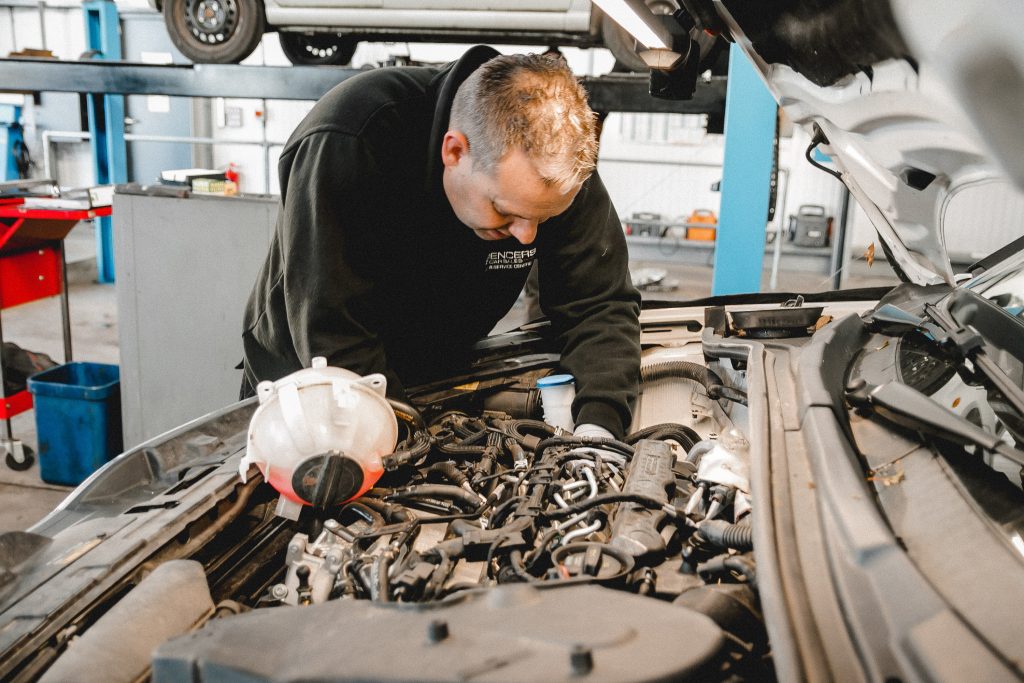Passing the MOT (Ministry of Transport test) is a legal requirement for vehicles in the UK over three years old, ensuring they meet road safety and environmental standards. However, many cars fail their MOT for reasons that could easily be avoided with regular maintenance and some extra care! Here are the top 10 common reasons cars fail their MOT and how you can avoid these pitfalls.
1. Lighting and Signalling Issues
A significant percentage of car MOT failures are due to faulty lights. This includes headlights, brake lights, indicators, and rear reflectors.
Avoidance Tip: Regularly check all your car’s lights to ensure they are functioning correctly. Replacing bulbs is generally simple and can be done at home.
2. Tyre Condition and Tread Depth
Tyres with insufficient tread depth or those in poor condition are another common cause for MOT failure.
Avoidance Tip: Check your tyre tread depth regularly; the legal minimum is 1.6mm across the central three-quarters of the tyre. Also, inspect tyres for cuts, bulges, or other damage.
3. Brake Problems
Faulty brakes are a critical safety issue and a common car MOT failure point.
Avoidance Tip: Listen for unusual noises when braking or if the car pulls to one side, these can be signs of brake issues. Have your brakes checked by a professional like Spencer’s if you notice anything unusual.
4. Suspension Issues
Worn or damaged suspension components can lead to MOT failure.
Avoidance Tip: Be aware of signs like uneven tyre wear, poor handling, or knocking noises when driving over bumps. Regular checks by Spencer’s can catch suspension issues early.
5. Issues with the Driver’s View of the Road
Cracked or damaged windscreens and improperly positioned mirrors or wipers can obstruct the driver’s view, leading to MOT failure.
Avoidance Tip: Ensure your windscreen is free of significant damage, especially in the area swept by the wipers, and that your mirrors and wipers are correctly adjusted and in good condition.
6. Fuel System
Leaks in the fuel system or a loose fuel cap can result in a failed car MOT.
Avoidance Tip: Regularly check for signs of leaks and ensure the fuel cap is secure and seals properly.
7. Exhaust Emissions
Exceeding emission levels is a common reason for car MOT failures, especially in older vehicles.
Avoidance Tip: Regular servicing can help maintain your engine’s efficiency and reduce emissions. Be particularly mindful if your car produces excessive smoke or noise.
8. Steering
Faulty steering is a serious issue that can lead to car MOT failure.
Avoidance Tip: Be alert to signs of steering problems, such as the steering feeling heavy or the car pulling to one side. These issues should be assessed by us!
9. Seatbelts and Airbags
Any malfunction or damage to seatbelts and airbag systems can cause a car MOT failure.
Avoidance Tip: Regularly inspect all seatbelts for damage and ensure they click into place correctly. Also, ensure airbag warning lights are not illuminated.
10. Registration Plates and VIN
Illegible, incorrectly formatted, or damaged registration plates and missing VIN (Vehicle Identification Number) can lead to an car MOT failure.
Avoidance Tip: Ensure your registration plates comply with legal standards and are clean and legible at all times.
Conclusion
Many common MOT failures can be avoided through regular maintenance and by paying attention to your vehicle’s condition. By addressing these areas proactively, you can greatly increase the chances of your car passing its MOT test, ensuring your safety on the road and avoiding a retest’s cost and inconvenience. Remember, keeping your car in good working order is not just about passing the MOT! It’s about ensuring your and others’ safety every time you drive.
To book your service or MOT, click here.
To browse some used cars, click here.



